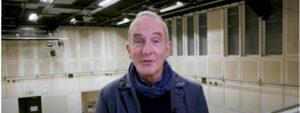Robin Hood Energy: one year on
Robin Hood Energy was set up 12 months ago by Nottingham City Council with the specific aim of taking on the ‘Big Six’ suppliers. Since then, it has established itself as a force to be reckoned with and was even highlighted by Labour leader Jeremy Corbyn in his recent conference speech. Jamie Hailstone speaks to Robin Hood Energy’s chief executive, Gail Scholes, about its first year in business and the impact it has had on customers in the East Midlands and beyond.
How has the first year at Robin Hood Energy gone?
It’s been a challenging year and we’ve not sat still. We launched in September 2015 for credit customers and because we wanted to offer a pre-payment tariff more or less straight away, we launched that in November. We carried on and built a white label offer, so other local authorities and private sectors could join Robin Hood Energy. We have also entered into the feed-in-tariff (FITs) supply market, which meant we could supply a domestic property if they have solar PVs on the roof. We had our first commercial contract in April, and also in the same month we started our smart meter roll out.
How easy has it been to establish the Robin Hood Energy brand?
It’s a good strong brand. Lots of people have used their own connotations about us robbing from the Big Six, but being not-for-profit is our big USP. We were the first energy provider to enter into the market who said we were not-for-profit. Any surplus in the business will be knocked off tariffs or invested in energy efficiency schemes. There’s no shareholder getting a payment out of this.
What’s the customer base now?
Our first year target was 50,000 customers and by the end of October we will have met that. But it hasn’t been as easy as some people think because 70% of customers don’t switch and that needs to be recognised. In essence, new entrants and the ‘Big Six’ are playing in a 30% market for a share. Part of our USP is to break into that 70% who have never switched. Most of those customers will trust a council. Councils have a strong brand. They are here to support local residents. We’re hoping the council brand that sits behind us can also have some weight to help tap into those non-switchers.
 Is your customer base primarily around Nottingham?
Is your customer base primarily around Nottingham?
Not necessarily. We’ve just taken on Leeds City Council, which was our first white label deal. We have a customer base in Wales. We started in Nottingham and the East Midlands, but I think very quickly those numbers will be overtaken by other regions.
A report by the Institute for Public Policy Research, published in the summer, claimed Robin Hood Energy was having a significant impact on energy prices in the East Midlands. What sort of impact have you had?
Before we launched Robin Hood Energy in the East Midlands, the region was ranked seventh out of the 14 national energy distribution zones in terms of price. Six months after we had launched, it was ranked first. It didn’t matter which provider you were served by, prices moved after we entered the market. E.ON dropped their prices three times during the first six months.
As well as cheaper rates, do you think Robin Hood Energy is having a wider impact in terms of tackling fuel poverty?
We’re trying to change our traditional pre-pay meters because I believe a lot of pre-pay customers who are on these tariffs don’t need to be. What we are trying to do is move away from traditional meters to smart meters, which provide real-time data. If we monitor the customer and they have not used emergency credit and appear to be managing their account well we can flick them over to credit mode. By changing over their tariff they can have an additional saving of over £300, which is significant. This can be a way of moving people away from the most expensive tariff and get people to understand their energy usage better.
You are sourcing energy direct from the National Grid. Will you be looking at local energy generation as well?
In year three of our business plan we will look at power purchase agreements (PPAs). We want to actively encourage community energy projects and give long-term commitments to them. We will be actively helping them with structural issues and making long-term commitments to take on PPAs over a 20-year period. It needs to make sense from a business point of view, but a lot of them do. Renewable energy still has its day, even though FITs and other incentives have been taken off the table.
What other plans do you have for the future?
There’s so much more you can do with smart meters, particularly around health. We can be notified when a customer is being discharged from hospital. Through smart metering, we can monitor to see, for example, if the kettle goes in normally at 9am. If it doesn’t, we can send a signal straight to the carer saying there has been no activity since the customer has gone back.
We’ve had Warmer Wales come up to see us, so we’re talking to them and the Welsh Assembly about what other technologies are coming through. There are all sorts of technology coming onto market to monitor the elderly in their own homes. This is something we’re going to be closely monitoring.
And on the renewable energy front, we are keen to look at battery technology and communities having their own micro electricity grids. It’s a real honey pot at the moment in terms of possibilities.












